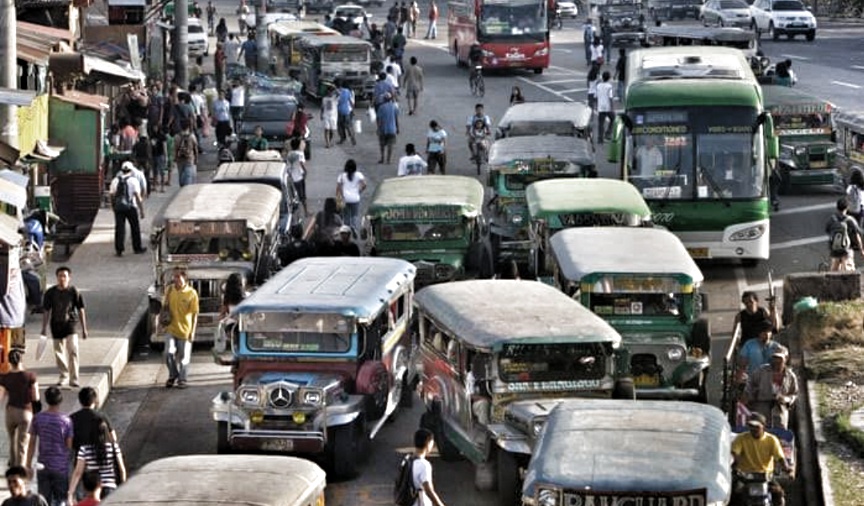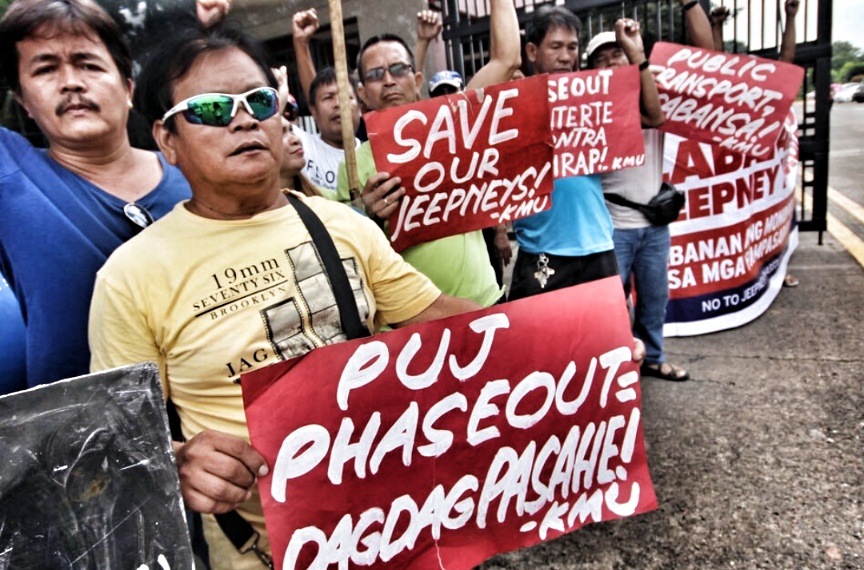I still can’t figure out how millennials like Inquirer columnist Anna Cristina Tuazon think and it’s unlikely I will ever in what time I have left. In her piece “Jeepney operators strike back”, Tuazon writes of the so called plight of the jeepney drivers facing the forces of modernisation; how their “fight” is “not mere nostalgia” and that “they are fighting to preserve their right to own their own business and have autonomy over how to provide for their families.”
My professional training is such that I look at the problem from its origin and then understand the evolution to the present context of why it had become a problem. Jeepneys were born out of the need for a transport solution after World War II. The US Army didn’t ship back equipment and materiel they used to liberate the country. It was too costly and it was cheaper to just write them off seeing as how they wouldn’t have any use back home. Given that historical backdrop, Tuazon’s nostalgia comes across as absurd. She writes, how “[the] modernization program as it stands strips the jeepney of their individuality and washes away their stories.”
Culturally, the jeepney is known for its colorful and varied design, each operator making the jeepney truly their own. We see portraits of their loved ones as a reminder that behind each vehicle is a Filipino family. They proudly paint on words that inspire them and motivate them to keep going. Jeepney operators take great pains to rise above the chaotic mass on the streets and make sure that they were seen.
As a child and a teenager, I still saw some of these surplus vehicles in the yards lining Paz Mendoza Guazon St. going to Paco riding on a jeepney which was one of those converted into public transport. There wasn’t much traffic then and Metro Manila wasn’t as congested as it is now. Tuazon argues in her column that “[we] should have recognized their homegrown ingenuity and used that for modernization rather than replacing them with imports.” These have no bases because the jeepney has long outlived its relevance as a transport option. Given the number of residents in the national capital region and the extended boundaries covering those who reside in Rizal, Bulacan and Cavite, what’s needed are higher capacity public utility vehicles feeding into the light rail network or bus stations.
| SUPPORT INDEPENDENT SOCIAL COMMENTARY! Subscribe to our Substack community GRP Insider to receive by email our in-depth free weekly newsletter. Opt into a paid subscription and you'll get premium insider briefs and insights from us. Subscribe to our Substack newsletter, GRP Insider! Learn more |

Jeepneys routinely foul up Metro Manila’s roads and cause massive traffic jams.
The issue is Pinoys have never been used to walking. The jeepneys have always been there to drop them off exactly where or near to where they’re going. Aside from this, there is also the absence of a long-term development plan for the national capital region. Marcos had one but Cory and her minions junked that. Road alignments suitable for light rail lines were cluttered with flyovers which meant that no mass transport system could be put in place on the main thoroughfares such as C-5. Think of how other Asian capitals have light rail lines ringing their respective metropolitan areas and contrast that with ours where we have only three that allow you to go around the outer perimeter and inward with jeepneys and buses as the options.
Tuazon is clearly on the side of the operators and drivers which is mind boggling considering that they’re the minority. The majority are the commuters whose safety and convenience should be paramount. The infrastructure deficit is one reason why foreign investors have not been coming in droves to the country. The transport situation in Metro Manila is no different than the state of the government bureaucracy. Traffic congestion is a problem. So is red tape and corruption in the bureaucracy. Wokes like Tuazon have made it their mission to defend the poor without even thinking why they continue to be poor to begin with.
It’s not like there are no social amelioration measures in place. Education is “free” up to the tertiary level. There is the 4Ps. Every local government unit (LGU) politico has some sort of livelihood program ongoing. Short of doling a basic income out to jeepney drivers, what more help can be extended to them to ease their plight? For as long as we remain with this victim mindset were not going to get out of the rut we find ourselves in.
LGUs should actually be thinking of solutions for their constituents to be able to commute to and from their residence to their place of work. Driving in Metro Manila today is very stressful because of the hazards posed by public utility vehicles, motorcycles and bikes. It’s bedlam. No one follows traffic rules. I doubt if Tuazon rides a jeep in her daily commute. I don’t think she would even risk doing so on a daily basis because it’s not easy to bear being sandwiched among other passengers being subjected to the heat and dust and caught in traffic. Unfortunately, rather than see things from the perspective of the commuting public Tuazon plays the Victim Card on behalf of this derelict industry…
With small operators being banned from participating and foreign manufacturers gobbling up certifications for their modernized PUVs, it is not modernization that is happening but a hostile takeover of the jeepney industry.

Members of communist front groups posing as “activists” have been painting jeepney drivers as “victims” for decades.
Transport modernization is only one part of the solution. The major component is route rationalization which should involve the LGUs. Another is the restoration of the post of Metro Manila Governor. Someone has to reign in the LGU heads who are another reason for the chaos in Metro Manila. It’s not only the jeepneys which are a problem. There are also the damn and blasted tricycles and the motorcycle riders who think they’re free to do anything as they please on the roads. The emerging menace are the electric tri-bikes. I can’t understand why there’s no registration required with the LTO for the latter and why are they allowed on main roads to begin with. At most, they should only be allowed in subdivisions. But in the freewheeling Philippines, anything and everything goes which is why there’s nothing to look forward to anymore.
Cook wide reader political crackpot music afficionado old soul out-of-the box thinker aspiring writer tech geek gearhead
Like what I said in my recent article, it’s all about a narrative to exaggerate the “victimhood” of certain people or portray non-victims as victims. Then those making the narrative will present themselves as the solution, we should be in charge… but they actually don’t know any solutions.
This situation is also seen in how fossil fuel capitalists refuse to give up their hold on energy to give way to newer technologies. I guess it’s easier to point the flaw on a smaller scale.
It is very disturbing as well as disgusting when those jeepney drivers–who DO have a responsibility to provide the commuting public with safer, cleaner and more efficient means of public transport–are the very same ones who are violating their responsibilities by opposing PUV modernization. Instead of using proper logic or being open to solutions that can improve the situation, they allow themselves to be ruled by their own emotions that enable them to be judgmental and bigoted in the way they think and perceive issues, which should not be the case. Plus, the way they project themselves as martyrs or victims does not set a very good example for the public. Again, we do not need such whiners; the more they whine, the more miserable they end up–and the more they lose their trust with the public.